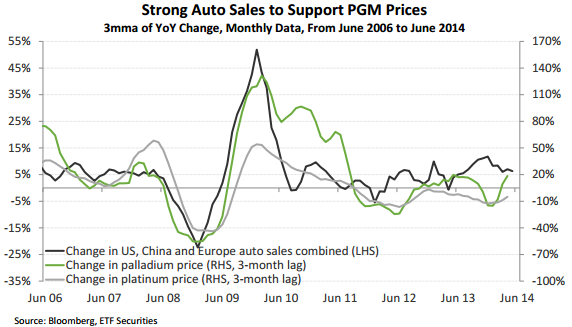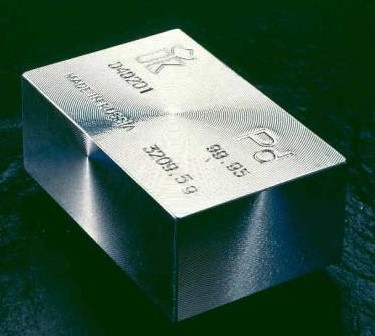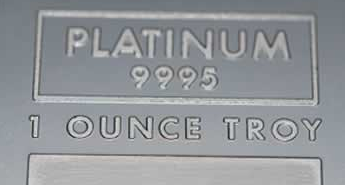Nyheter
PGMs back in focus as investors reassess supply tightness

 PGM prices have rallied strongly over the past few weeks, despite the strikes in South Africa having finally come to an end. We believe investors are finally focusing on the fundamentals of platinum and palladium and believe that prices will continue to rise as the industry struggles to get back to full production. More structural changes are foreseen in the near future, with PGM prices likely to benefit from increased tightness.
PGM prices have rallied strongly over the past few weeks, despite the strikes in South Africa having finally come to an end. We believe investors are finally focusing on the fundamentals of platinum and palladium and believe that prices will continue to rise as the industry struggles to get back to full production. More structural changes are foreseen in the near future, with PGM prices likely to benefit from increased tightness.
- Platinum and palladium prices have risen by 5.3% and 4.1% respectively since an “in principle” agreement between the Association of Mineworkers and Construction Union (AMCU) and the three biggest miners (Amplats, Implats and Lonmin) was reached on June 12, 2014, posing an end to the 5-month long strike in South Africa.
- Continued tensions in the Ukraine, coupled with news of a new strike by the National Union of Metalworkers of South Africa (NUMSA) and continued strength in auto sales, buoyed Platinum Group Metals (PGMs) prices over the past few weeks.
- While the 220,000 engineering and metal workers strike by the NUMSA is unlikely to impair platinum and palladium production in the short term, given the geographical concentration of PGM supply, social activism and government intervention in the South African mining industry will continue to have an impact on prices.
- Amplats, the biggest platinum producer, already announced its intention to exit Rustenburg after the latest prolonged strikes have seriously impacted the company’s profitability. Some of the other miners are also assessing the long-term viability of some of their mines which might be permanently closed or downsized.
- We remain positive the fundamentals of platinum and palladium and believe that prices will continue to perform strongly in 2014. Large deficits are already expected in both markets this year and the recent pick up in global auto sales is likely to exacerbate the situation further. With combined auto sales in the US, China and Europe, the three biggest regions by consumption, up 6% in the first five months of 2014 on the previous year, the PGM market is looking increasingly tight.
- We believe the strikes in South Africa have substantially affected the long-term prospects of the PGM industry and that only in the next few months we will be able to appreciate the financial and strategic impact on the industry. Meanwhile, we continue to target platinum and palladium prices to rise to US$1,550 and US$ 858/oz respectively in the next six months.
Nyheter
Kinas elproduktion slog nytt rekord i augusti, vilket även kolkraft gjorde

Kinas officiella statistik för elproduktion har släppts för augusti och den visar att landet slog ett nytt rekord. Under augusti producerades 936 TWh elektricitet.
Stephen Stapczynski på Bloomberg lyfter fram att det är ungefär lika mycket som Japan producerar per år, vilket innebär är de producerar ungefär lika mycket elektricitet per invånare.
Kinas elproduktion kom i augusti från:
| Fossil energi | 67 % |
| Vattenkraft | 16 % |
| Vind och Sol | 13 % |
| Kärnkraft | 5 % |
Stapczynskis kollega Javier Blas uppmärksammar även att det totala rekordet inkluderade ett nytt rekord för kolkraft. Termisk energi (där nästan allting är kol) producerade 627,4 TWh under augusti. Vi rapporterade tidigare i år att Kina under första kvartalet slog ett nytt rekord i kolproduktion.
Nyheter
Det stigande guldpriset en utmaning för smyckesköpare
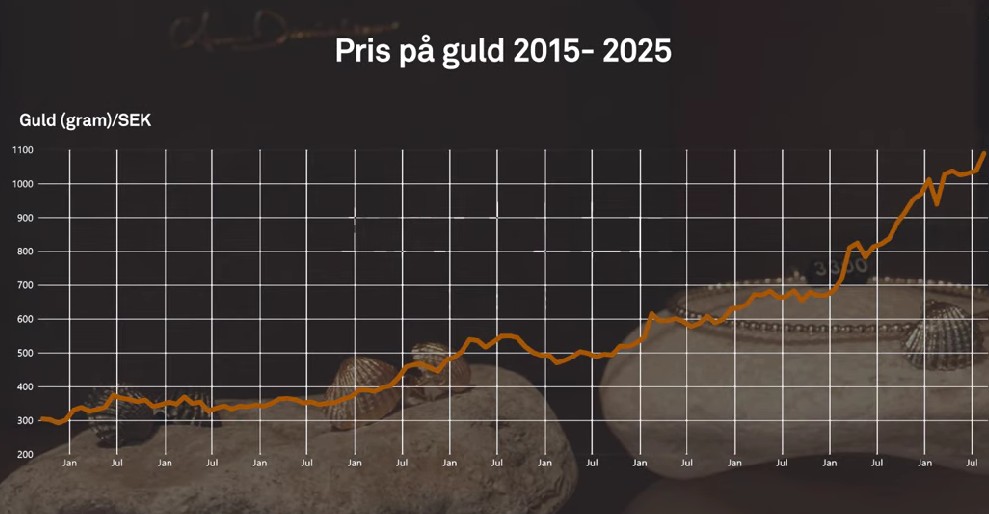
Guldpriset når hela tiden nya höjder och det märks för folk när de ska köpa smycken. Det gör att butikerna måste justera upp sina priser löpande och kunder funderar på om det går att välja något med lägre karat eller mindre diamant. Anna Danielsson, vd på Smyckevalvet, säger att det samtidigt gör att kunderna får upp ögonen för värdet av att äga guld. Det högre guldpriset har även gjort att gamla smycken som ligger hemma i folks byrålådor kan ha fått ett överraskande högt värde.
Nyheter
Aktier i guldbolag laggar priset på guld

Sedan år 2013 har aktierna i bolag som producerar guld inte alls hängt med prisutvecklingen på guld. I takt med att guldpriset har stigit så har avståndet bara blivit större. Detta trots att riskaptiten på aktiemarknaden i stort är högt.
I diagrammet jämförs priset på guld med Arca Gold Bugs Index, där indexet består av flera av de största guldbolagen.
-

 Nyheter4 veckor sedan
Nyheter4 veckor sedanMeta bygger ett AI-datacenter på 5 GW och 2,25 GW gaskraftverk
-
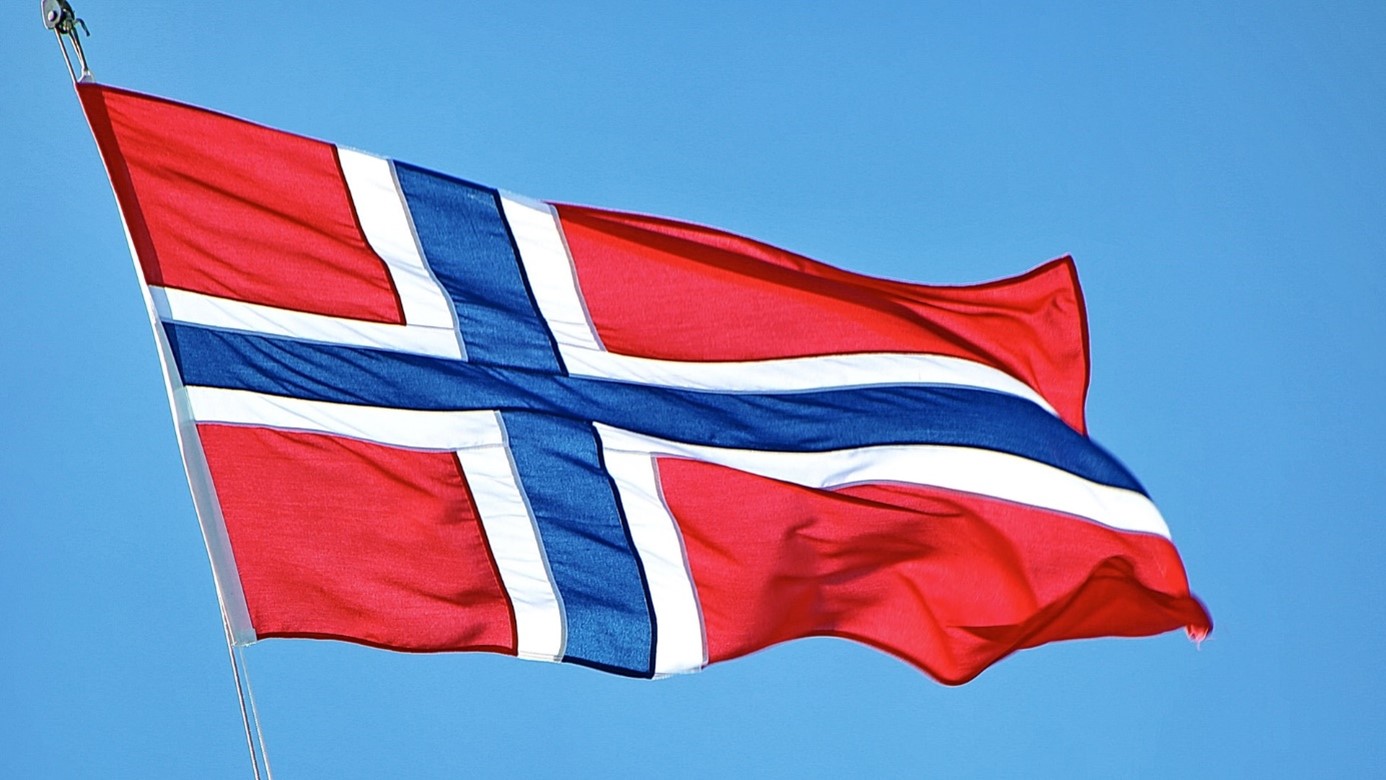
 Nyheter4 veckor sedan
Nyheter4 veckor sedanAker BP gör ett av Norges största oljefynd på ett decennium, stärker resurserna i Yggdrasilområdet
-

 Analys4 veckor sedan
Analys4 veckor sedanBrent sideways on sanctions and peace talks
-

 Nyheter4 veckor sedan
Nyheter4 veckor sedanEtt samtal om koppar, kaffe och spannmål
-

 Nyheter4 veckor sedan
Nyheter4 veckor sedanSommarens torka kan ge högre elpriser i höst
-

 Analys4 veckor sedan
Analys4 veckor sedanBrent edges higher as India–Russia oil trade draws U.S. ire and Powell takes the stage at Jackson Hole
-

 Nyheter3 veckor sedan
Nyheter3 veckor sedanMahvie Minerals är verksamt i guldrikt område i Finland
-

 Analys3 veckor sedan
Analys3 veckor sedanIncreasing risk that OPEC+ will unwind the last 1.65 mb/d of cuts when they meet on 7 September


